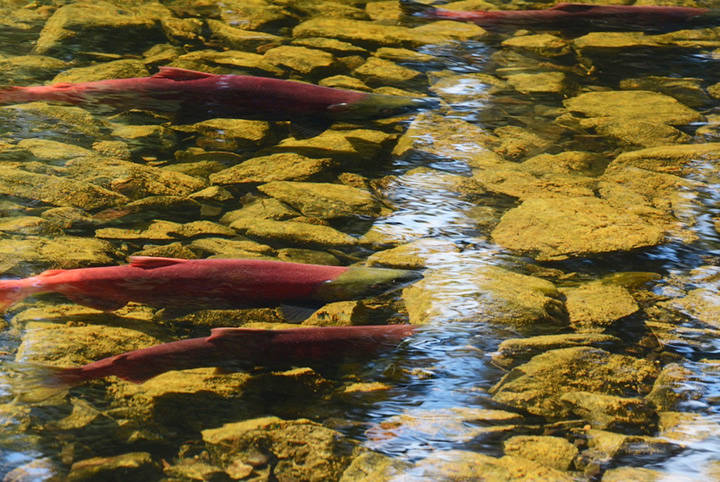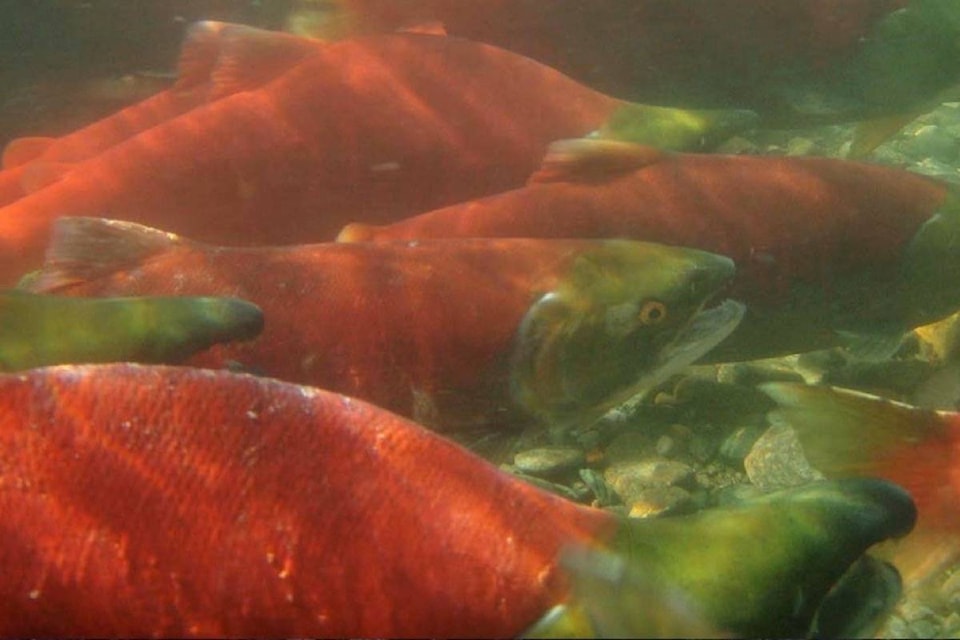Salmon stocks in the lower section of the Fraser River got a boost at the Lower Mainland Local Government Association (LMLGA) conference.
A resolution passed last week by 33 municipalities was aimed at improving fish habitat, recognizing that the Fraser is “home to more salmon runs than any other river in the world,” many of which are threatened by outdated flood infrastructure.
So when those outdated flood boxes, diking systems, and pumps get replaced eventually, it should be with fish-friendly equipment, proponents argued.
The resolution is calling on the province to take “ecological connectivity” and “aquatic ecosystem health” into consideration, by providing funding for fish-friendly infrastructure whenever aging or inadequate equipment needs upgrading.
Coun. Jason Lum, who just finished his term as LMLGA president, said he sees the infinite wisdom in this direction.
The fish-friendly resolution passed last week dovetails nicely with the decision to halt gravel removal on the Chilliwack-Vedder River, Lum said.
“We need to work in partnership with other levels of government, to take the environment and the wild fish stocks into consideration. It’s important to strike that balance of the natural habitat, against the importance of flood protection, and keeping people and infrastructure safe.”
Coun. Sam Waddington said with so many fish stocks spawning in the Chilliwack area, the community has a vested interest in seeing its dike infrastructure have multiple purposes.
“Obviously it has become very real as the flood water laps at our shore right now. But it’s not an either-or situation. You can have infrastructure that keeps the river outside the dike, and have the same infrastructure passible for fish, which will certainly help returning salmon stocks,” Waddington said.
It might mean changing things with a policy framework provincially that could involve retrofitting existing infrastructure to allow fish to enter the waterways.
Because of that vested interest, Chilliwack was integral in pushing to have this resolution come forward.
B.C. must take “a leadership role” on this file, according to a Watershed Watch rep.
“At this time of year, juvenile chinook and coho are looking for protected areas in the lower Fraser, rearing grounds where they can feed and grow before they head out to sea,” said Lina Azeez, a Watershed Watch Salmon Society campaigner, in a release.
Habitat is key when talking about rebuilding fish stocks.
“Upgrading to fish-friendly flood infrastructure will open up that habitat to migrating fish. It’s a win-win, for people and for salmon.”
“Washington State has their Floodplains By Design program, improving fish habitat by re-wilding waterways. We need to see B.C. take a leadership role in creating similar programs,” said Azeez.
The LMLGA resolution heads to the Union of B.C. Municipalities (UBCM) conference in September to be voted on by all B.C. municipalities.
@CHWKjourno
jfeinberg@theprogress.com
Like us on Facebook and follow us on Twitter.

